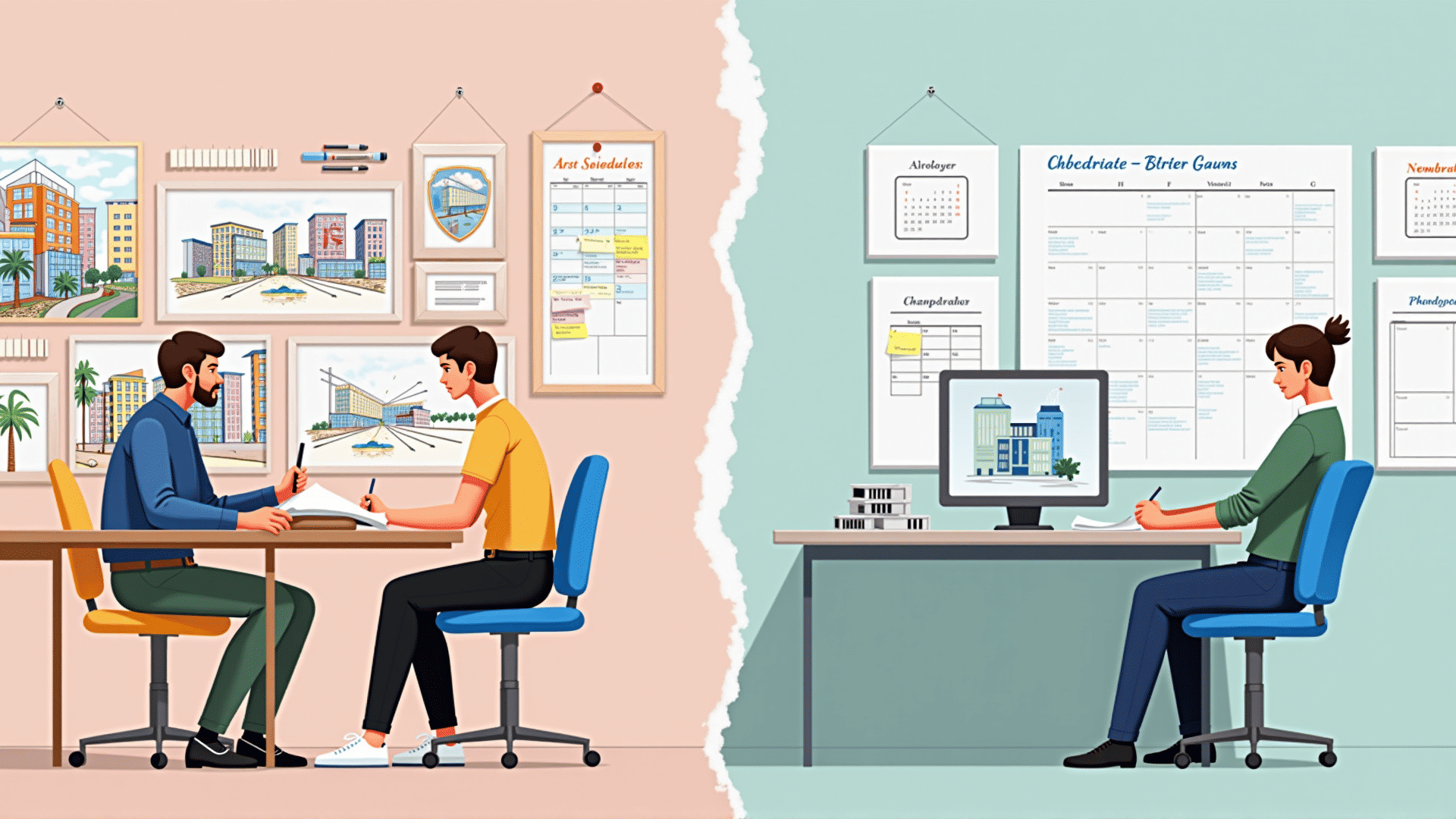In the world of architecture, creativity and scheduling often seem to exist in tension with one another. Architects are challenged to produce designs that are both innovative and aesthetically pleasing while also adhering to strict timelines and budgets. Striking a balance between creativity and scheduling is crucial for delivering successful projects. Here, we explore strategies that architects can use to harmonize these two essential components.
1. Embrace the Power of Planning
Effective planning is the cornerstone of balancing creativity and scheduling. Begin with a clear project brief that outlines the client's needs, design objectives, budget, and timeline. Engage all stakeholders early in the process to ensure everyone's expectations are aligned. This clear understanding forms the foundation upon which creativity can flourish without compromising on deadlines.
2. Foster a Collaborative Environment
Creativity thrives in collaborative settings. Encourage open communication and teamwork among architects, engineers, clients, and other stakeholders. This collaborative approach facilitates the sharing of ideas, which can lead to innovative solutions that meet design and scheduling requirements. Collaboration also helps in identifying potential issues early, allowing for timely adjustments.
3. Leverage Technology
Technological advancements have equipped architects with tools that enhance both creativity and efficiency. Utilize software like Building Information Modeling (BIM) to produce detailed and precise designs. Such tools streamline the design process, reduce errors, and improve coordination among team members. Automation in some aspects of design and planning can free up more time for creative exploration.
4. Set Realistic Milestones
While it's essential to be ambitious, setting unattainable goals can stifle creativity and compromise project delivery. Break the project into smaller, manageable phases with realistic milestones. This approach can provide opportunities for creativity at every stage, without overwhelming the team. Each milestone achieved not only brings the project closer to completion but also allows for reflection and iterative improvements.
5. Prioritize Flexibility
Incorporating flexibility into the project timeline can prove beneficial. Unforeseen challenges are inevitable in architecture and having a buffer in the schedule allows the team to address these without losing momentum. Flexibility also enables architects to experiment and refine designs, ensuring the final product meets both aesthetic and functional goals.
6. Balance Risk with Creativity
Not all risk-taking leads to successful creative outcomes. It's crucial to weigh the potential benefits of a novel design idea against the possible risks it poses to the project timeline and budget. Informed decision-making involves assessing both creative ambitions and practical considerations, making sure that risk does not derail the project's success.
7. Continuous Learning and Adaptation
The field of architecture is ever-evolving, and staying informed about new trends, materials, and methodologies can enhance both creativity and efficiency. Encourage the team to engage in continuous learning and professional development. This growth mindset allows for adaptation and can introduce new perspectives that improve project delivery.
8. Regular Reviews and Feedback
Ongoing reviews and feedback loops are vital to maintaining the balance between creativity and scheduling. Regular check-ins with clients and stakeholders ensure that the project remains on track and align with the evolving vision. Constructive feedback helps refine designs promptly and builds trust among all parties involved.
Ultimately, the balance between creativity and scheduling in architecture is about creating a synergistic relationship between imaginative design and pragmatic project management. By employing the above strategies, architects can deliver projects that are not only visually compelling but also completed on time and within budget. This approach not only satisfies clients but also brings professional fulfillment and paves the way for future successes.
